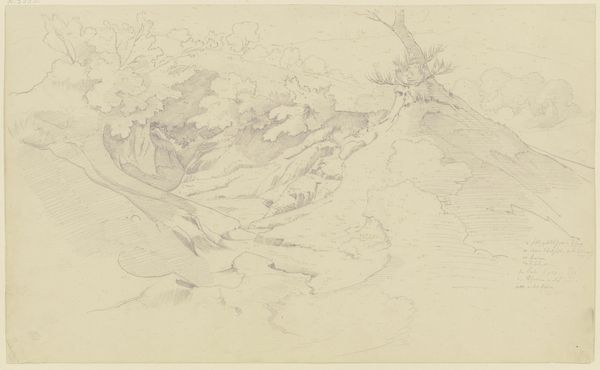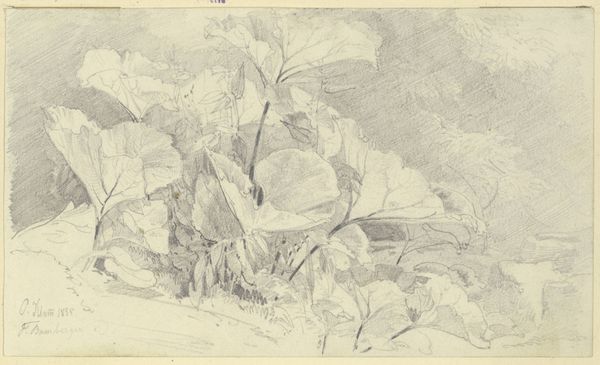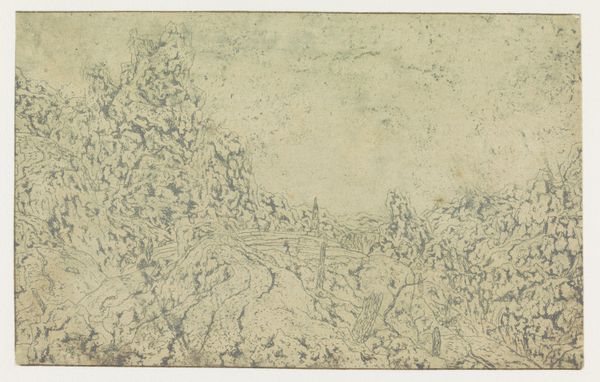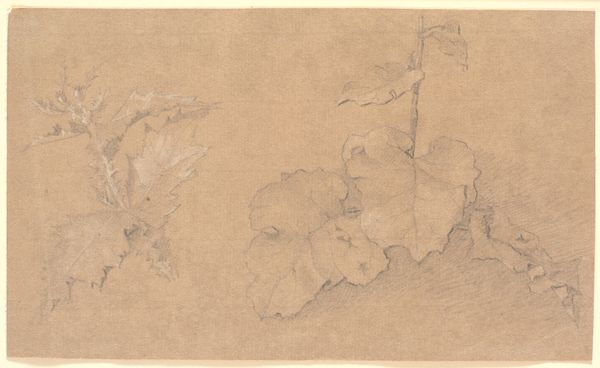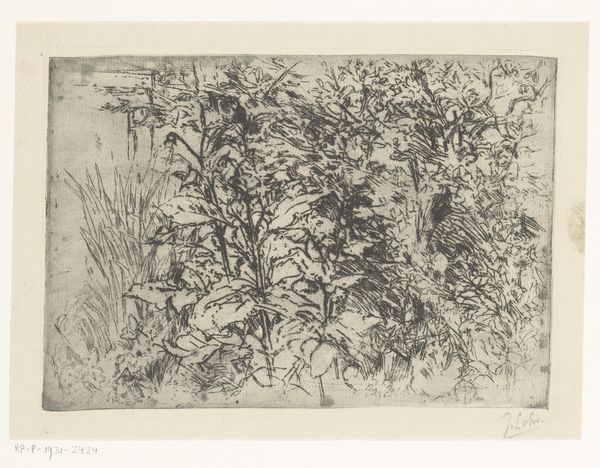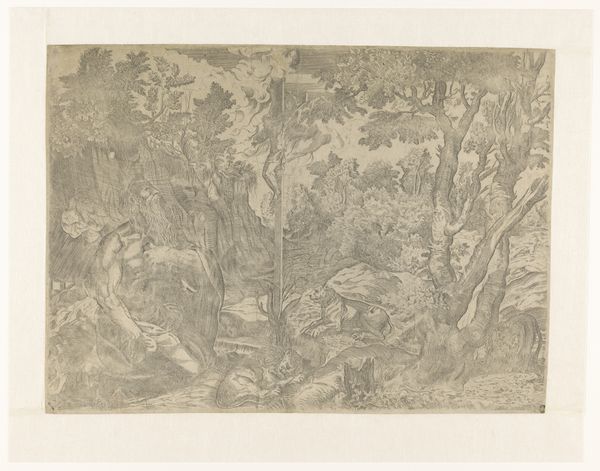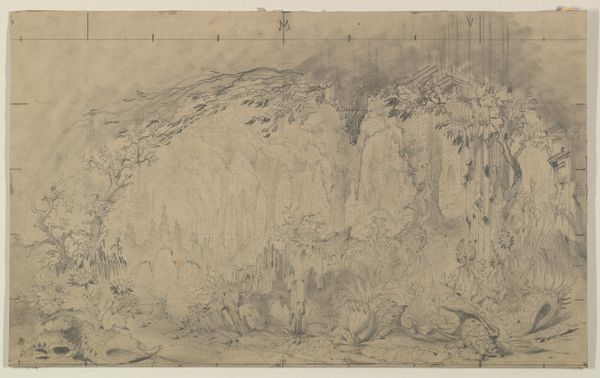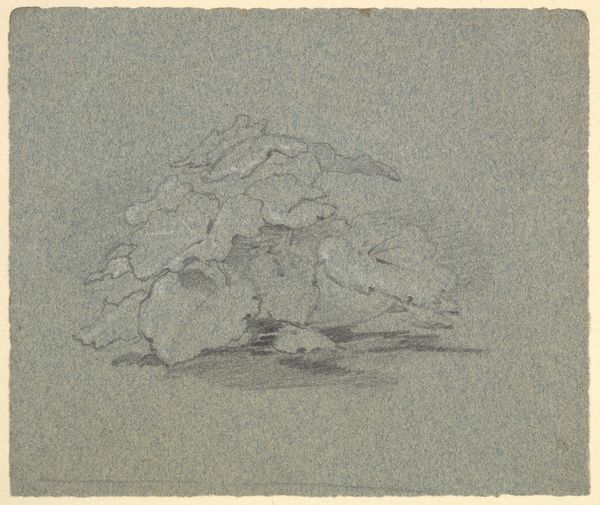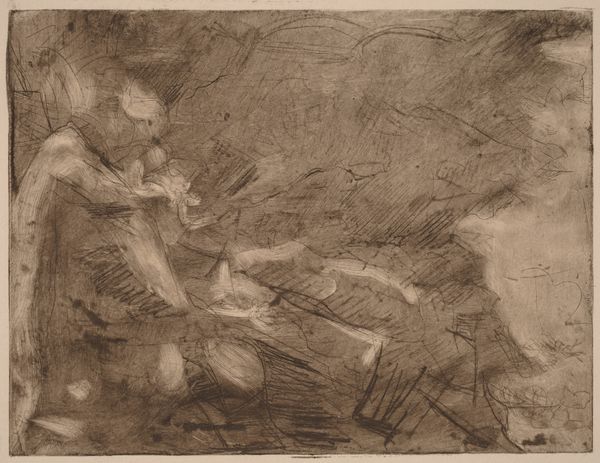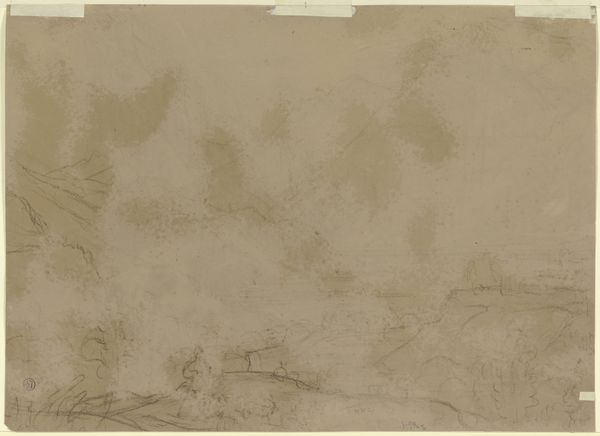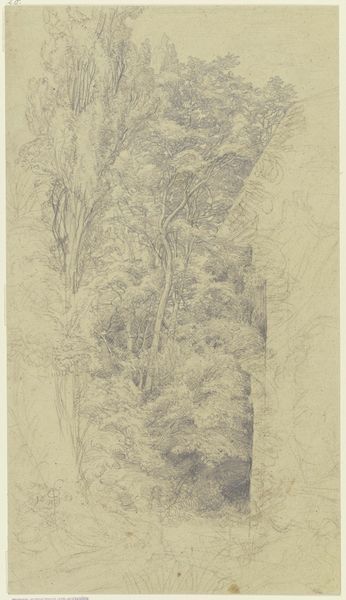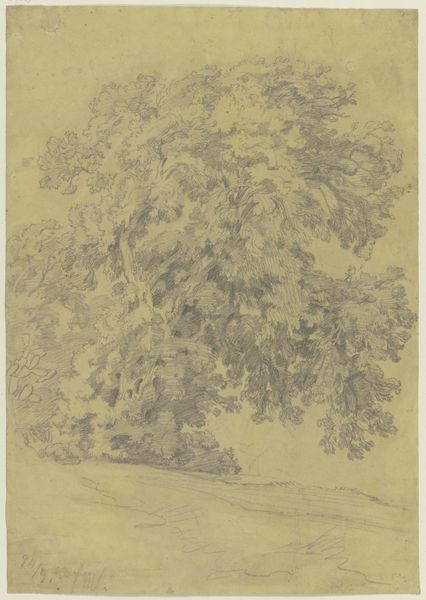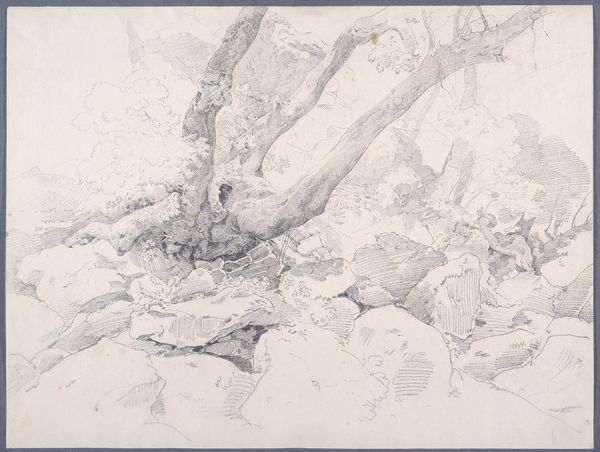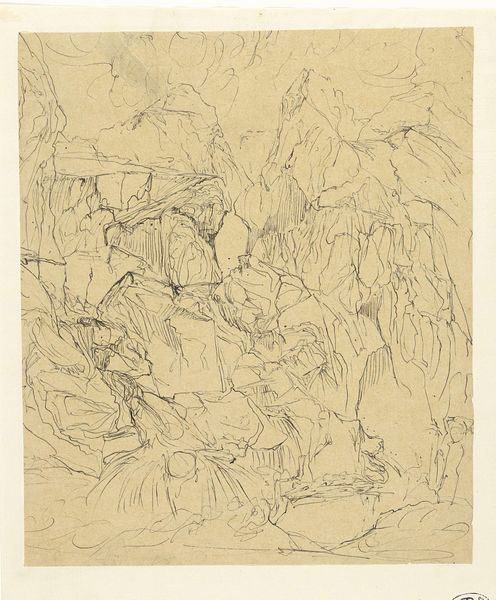
drawing, pencil
#
drawing
#
pencil sketch
#
landscape
#
pencil
#
realism
Dimensions: height 317 mm, width 480 mm
Copyright: Rijks Museum: Open Domain
Curator: Welcome. We're standing before Reijer Stolk's "Planten aan de waterkant," a pencil drawing likely created between 1914 and 1917. It’s currently held here at the Rijksmuseum. Editor: The first impression I have is one of hushed observation. A tranquil, almost monochromatic scene teeming with vegetative life rendered with exquisite precision. There’s an immediate calming effect in how meticulously each leaf is described. Curator: Precisely. Observe how Stolk meticulously renders each leaf and stem, prioritizing a visual likeness and structural accuracy above all else. The drawing privileges objective observation and clarity. Note the delicate lines; it’s an intense study in tonal variation achieved with graphite. Editor: And while Stolk's skill is undeniable, one must consider the historical moment. Given its probable creation during or just after WWI, this seemingly objective study could be viewed as an escape. The deliberate focus on the minutiae of nature feels like a retreat from the societal upheavals experienced across Europe. Is this realism, or is it a form of quiet protest against a world in chaos? Curator: That is one compelling contextual reading. However, if we focus on its formal qualities, notice how the artist masterfully creates depth through layering. Each element adheres to formal principles of naturalism, faithfully replicating visible reality through light and shadow. Editor: But isn’t all art shaped by its sociopolitical backdrop? Can we truly separate the artist's personal reality and collective trauma from such intimate works? Doesn’t the act of representing, in and of itself, engage the very real socio-political environment to which it refers? Perhaps these plants offer symbolic commentary on resilience, resistance, or even fragility amidst upheaval? Curator: That’s an interesting proposition. I must concede that even ostensibly neutral subjects resonate more broadly due to historical awareness. Still, it is possible to isolate form and technical achievement when evaluating art such as this, as we seek meaning within structure. Editor: Form cannot be emptied of the contents of social reality, and these details invite many interpretations. What at first seems an objective rendering blossoms when considering its potential to connect past with present and individual struggles with collective experience. Curator: It’s interesting how differently we both approached the artwork, but this offers a range of avenues through which audiences may explore the complexities. Editor: Exactly. What begins as careful contemplation evolves into dialogue, linking this image with a world far beyond what the eye initially sees.
Comments
No comments
Be the first to comment and join the conversation on the ultimate creative platform.
